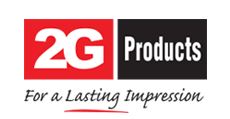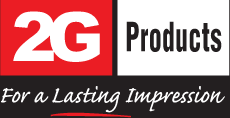News
What are the benefits of aluminium nameplates30 Aug 18
When the surface of aluminium is exposed to air, a protective oxide coating forms almost instantly. This layer is corrosion resistant but it can be further enhanced with surface treatments such as anodising, meaning any kind of graphic, logo or text is screen printed and sealed beneath the anodic layer. Not only does this offer extra durability but it also provides resistance to abrasion, chemicals, solvents and extreme temperatures. The anodic layer also provides better adhesion for paint primers and glues, especially when compared to applying these on bare metal.
Another advantage of utilising aluminium for a nameplate is its strength to weight ratio. To give you an idea on its performance, aluminium has a density of around one third that of steel, so it’s a fine option if you require a nameplate that doesn’t weigh too much, whilst it’s bendable too, which can often be very important for nameplates, testplates or any other kind of information sign. We’re proud to have been in the business for more than 22 years now, and we’ve found that customers choose our aluminium nameplates for the following reasons:
· - All of our nameplates, testplates and serial number plates are manufactured in-house in a range of thicknesses.
· - We dye the metal during the anodising process so that the print is beneath the anodised surface.
· - No matter how complex our client's design is, we can ensure the print is crisp, clear and covered.
· - Every nameplate we create is scratch and solvent proof.
How is anodising carried out?
We’re often asked by clients how their graphics are screen printed and sealed beneath the anodic layer and the technique is actually relatively simple. The aluminium is chemically treated to open the pores of the metal, whilst an anodyne dye is then printed on the metal. This dye penetrates the surface and is then sealed into the aluminium, in what is known as a ‘chemical bath’. Once complete, you then have a very dependable, weather-resistant plate with a long lifespan, even in outdoor environments.
It’s also important to note that other metals can be anodised, however, it’s not recommended. If we take iron or carbon steel, for example, the oxide layer that forms is rust, which readily flakes off and promotes corrosion, so it’s not an ideal option by any means!
So there you have it, these are a few of the reasons why you should opt for aluminium, whether that be for a simple nameplate, an offshore container plate or a testplate.
Here at 2G Products, we’ve been specialising in the manufacture of nameplates, front panels and decals for more than two decades, so if you have any questions at all about any of our materials, printing techniques or manufacturing methods, please do not hesitate to call a member of our team on 01224 682682. Alternatively you can email us at 2g@2gproducts.co.uk and we’ll be back in touch as soon as possible.


